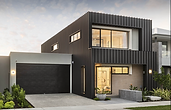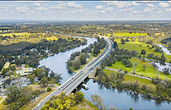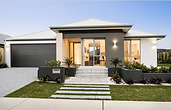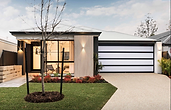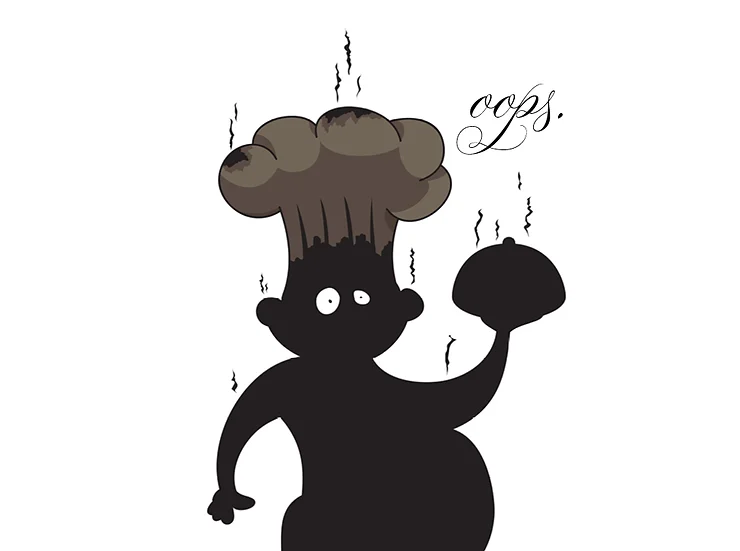White goods in black (and white).
Saying we “need” anything these days beyond our health, food, water, money, shelter, love, and Netflix isn’t really accurate. We could all survive on those things alone. So instead of placing value on what we “need”, I want to propose we should consume more by how much we USE something. For example, I have four raincoats and they all get so much use for different weather and walking occasions. Could I own just one and survive? Sure, but I’d have to either layer a lot under or leave unzipped based on the level of precipitation, the temperature outside, and how fast I feel like walking those dogs. So as I design and purchase I’m thinking far more about USE than need or want. This does not negate any desire to be less consumptive, it’s finding that middle ground between practicality (use) and luxury (love) – and by positioning “how often we use something” as the most valuable part of the equation, we are buying more for long term. And I’m not alone…
…with the quick conclusion being “A LOT MORE”. If the kitchen was the “heart of the home” before, then it became that PLUS all the guts. Thus the explosion of kitchen remodels with the goal of better cooking function, easier maintenance, more storage, and yes, while we are at it, more amenities to varying degrees of luxury and waste. While designing our kitchen I once again dove into what appliances are “new”, “smart” or simply just universally opted for these days – both for day-to-day function and maybe for those who entertain grandly. These “trends” are not just style or even colour, but more function, operation, and layout.
Many design professionals recommend setting aside about 12% of your overall remodelling budget when renovating to spend on appliances. And with half of homeowners choosing to replace all of their appliances during a kitchen update, a similar mindset should be adopted when building a new home. Why go to the effort of mbuilding your very own space only to put in ill suited or obsolete appliances?
The global pandemic has brought underlying issues in supply chains to the surface across the world. There are problems at almost every stage, from material shortages halting the production of vital chips and parts, staff sickness and isolations, a lack of truck drivers and even a shortage of port workers to unload the goods.
Combined with high demand and generalized retail challenges, it’s no surprise it’s hard to get your hands on the right appliances. Some manufacturers have months-long waiting lists and backorders for some vital units might not be fulfilled until the end of the year.
Conversely retail giant Kmart joined the whitegoods game as of February this year… they currently have available washing machines, dryers, a dishwasher and fridges. A lot of these are at the affordable end of the scale and coupled with the logistical strengths behind them have made a major impact in delivering things on budget and on time.
The options are plentiful. However maximising both function AND budget? That is where the finesse is required.
Todays Good Reads
Happy Halloween! Or, not so happy Halloween.
What makes a good horror movie villain? There is a formula.
Full bottle on home security.
Whilst this is primarily US-centric, its a tonne of info on how to get the most out of home security.
The quiet zone in the home: Going the extra step.
Ever wanted to soundproof a room? Well now you can do it yourself

Mandurah: Perth’s southern sibling.
Mandurah started as a small, isolated settlement to the south of Perth. It wasn’t until the 1950s that it started to grow and today it is a commuter belt city for people working in Pinjarra, Kwinana and Perth. In recent times it has also become an important retirement destination. Being only 70 km south of Perth it is a popular daytripper destination with its primary appeal lying in fishing, crabbing and boating.
The railway line from Perth to Pinjarra was completed in 1893, and Mandurah’s reputation as a favoured holiday destination was quickly made. Mandurah continued to prosper with the fishing and canning industry and a timber mill, established in approximately 1911, providing jobs for local people. The mill closed in approximately 1926, and as the canning industry declined after the death of Charles Tuckey in 1912, due in part to the high costs associated with transportation and competition from canned fish imports from overseas, the main industry in Mandurah became tourism. History records that ‘goldfields’ people and later ‘wheatbelt’ people patronised Mandurah largely because of its huge catches of fish. At this point, Mandurah was estimated to have not more than 150 permanent residents.
From a very slow beginning, events for Mandurah have certainly moved very swiftly, and the continued growth culminated on the 14 April 1990, in a celebration of the attainment of City status. Today, it appears difficult to reconcile the meteoric progress experience in the latter half of the 20th Century to the wretchedness of the group that initially disembarked at Clarence. Mandurah is now one of the top tourist destinations in Western Australia, with a performing arts centre, cinema complex, spectacular waterways, first class holiday accommodation and overall a proud community spirit.
Only 10 short years ago, the city was reeling from a glut of vacant canal-side apartments resulting in failed businesses and broken dreams for many. Often having to bare the brunt of what happened when the speculators outnumbered the folks willing to commit and integrate into the city. The city’s median house price had dropped by more than $50,000 in five years to $373,000 and the number of property listings had sky-rocketed by 500 in 2012 when compared with the same quarter in 2007.
The median unit sales price in Mandurah is currently $317,500. Harcourts Mandurah director Ben Hatch said he’d noticed an increase in values on units specifically in central Mandurah. “For what you could buy a year ago at $199,000 now the values have gone up around $240,000 to $250,000. “There’s also been quite a large run of high end apartments through the Mandurah Ocean Marina like Oceanique and Aqueous apartments, which has also increased the median sales price of all the apartments in Mandurah.” This also bodes well for people looking to invest or move to the area, with an extended period of growth and an expansion of amenities paying off for those who take the plunge.
Better transport, more facilities and still the same proximity to the beach. The little sibling is gloriously exiting adolescence and those who have made the commitment are reaping the rewards.
Content with more content

